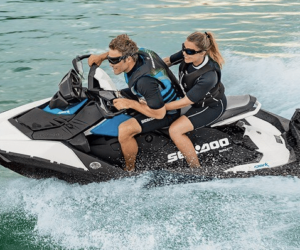Seasickness
Prevention and alleviation
Seasickness, also known as kinetosis, is a form of motion sickness caused by the repetitive motion of a vehicle, such as a ship or boat. This illness occurs when the brain receives conflicting signals from the eyes, inner ear and sensory receptors. Typical symptoms are dizziness, nausea and vomiting.
Preventive measures against seasickness
- Choose the right position on board: The best place on a ship to avoid seasickness is in the centre, close to the waterline. This is where the movements of the ship are the least. A position on deck, where fresh air and a clear view of the horizon are possible, can also help.
- Stabilisation of the gaze: Fix your gaze on a fixed point on the horizon. This helps to minimise the conflicting signals that the brain receives.
- Avoidance of visual stress: Reading or looking at screens can exacerbate symptoms as these activities increase the discrepancy between visual and balance signals.
- Food and drinks: It is advisable to eat light, low-fat meals before and during the journey. Avoid heavy, fatty or strongly flavoured foods. The consumption of alcohol and drinks containing caffeine should also be limited, as these can aggravate the symptoms.
- Drug prevention: Medication such as dimenhydrinate or scopolamine patches can be taken as a preventative measure. However, these medications are not suitable for everyone and should only be used after consulting a doctor.
- Acupressure bracelets: These bands apply pressure to the Nei-Kuan point on the wrist, which can help reduce nausea. Effectiveness can vary, but many people report positive experiences.
- Relaxation techniques: Breathing exercises, meditation and progressive muscle relaxation can help to reduce the physical and mental tension that often contributes to the worsening of seasickness.
Measures for relief after the onset of seasickness
- Fresh air and a view: As soon as the symptoms appear, get out into the fresh air and look at the horizon. This can help to reduce the conflicting signals and alleviate the symptoms.
- Occupy a quiet location: If possible, lie flat on your back and close your eyes. This reduces the discrepancy between the sensory impressions and can help to alleviate the symptoms.
- Hydration and light food: Drink small amounts of water or herbal teas to stay hydrated. However, avoid large amounts at once as this can promote vomiting. Light snacks such as dry biscuits or rusks can also help to alleviate symptoms.
- Ginger: Ginger is a well-known remedy for nausea. You can drink ginger tea, take ginger capsules or chew on a piece of fresh ginger.
- Medication against seasickness: If you have not taken any preventative medication, drugs such as dimenhydrinate or meclozine can be taken after the onset of symptoms. These can alleviate the symptoms and should be used as directed by a doctor.
- Aromatherapy: Essential oils such as peppermint or lavender can help to reduce nausea. You can drizzle a few drops on a cloth and smell it to relieve the symptoms.
- Behaviour and mental attitude: Sometimes a positive mental attitude can help to control the symptoms. Distractions such as listening to music or talking to fellow travellers can help to make the symptoms less intense.
Our summary
Seasickness can be an unpleasant experience, but one that can be significantly alleviated through preventative measures and targeted relief techniques. Proper preparation and understanding the mechanisms behind seasickness are key to maximising the enjoyment of a sea voyage. If you regularly suffer from seasickness, consult a doctor to find the best individualised strategies and treatments.

















